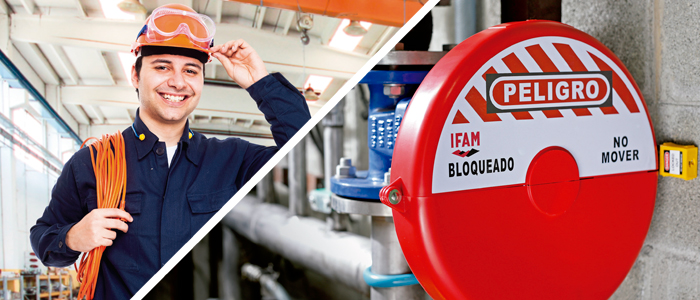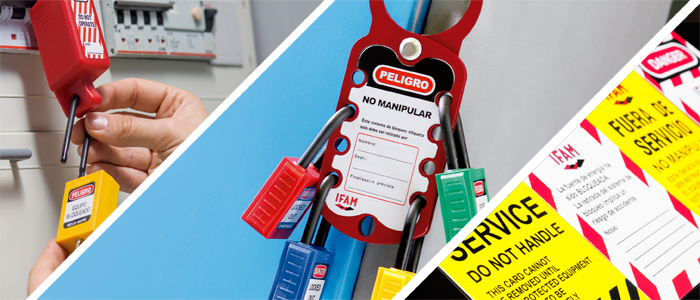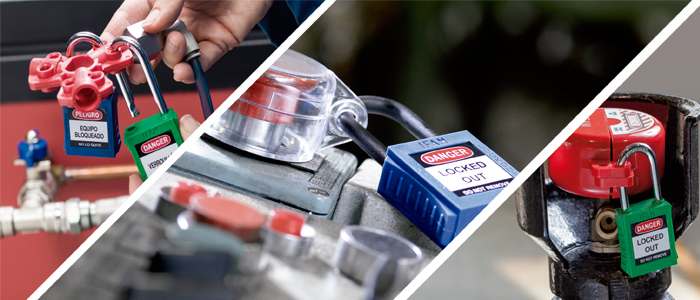Industrial Safety: What is lockout-tagout or LOTO?
Great advancements have been made over recent years in the field of occupational risk prevention in several countries following the application of laws and procedures to safeguard worker health and safety. One of the latest trends in this area has been the introduction of lockout-tagout procedures, which prevent accidental operation of machinery and equipment during maintenance and repairs.
Originating in the United States, lockout-tagout refers to a series of procedures leading to a significant reduction in industrial workplace accidents, thereby avoiding injuries of this kind and even death. It is estimated that approximately three million workers around the world are engaged in the maintenance and repair of industrial machinery, thus highlighting the protective potential of these procedures.
Risk prevention based on lockout-tagout is a standard not only in the US but also in countries that fall within its sphere of influence, such as Canada, Mexico and South America. It is also a standard in Europe, where numerous products can be found to help prevent accidents such as those caused by:
– Contact with electricity.
– Entrapment with moving mechanical parts of machinery.
– Hydraulic pressure.
– Pneumatic pressure.
– Gases.
– Liquids.
– Other causes.
What are LOTO products?
As stated above, there is a wide range of lockout-tagout products. They can be divided into three groups based on the role they play in the lockout-tagout process:
1. Padlocks
These are an essential part of any lockout-tagout process. They are made from materials that allow them to be officially approved as LOTO products, according to such criteria as resistance to electrical contact, extreme temperatures and ultraviolet rays, visibility based on bright colours, etc. Their role is to secure the lockout devices installed by those people authorised to handle them, which may be indicated on the tags that accompany the LOTO padlocks.
2. Lockout devices
This refers to the elements directly responsible for securing the power source of the machinery or equipment requiring maintenance or repair. Each device has a specific design. A lockout device for circuit breaker switches is not the same as one designed to prevent a gate valve from being opened.
As is the case with LOTO padlocks, lockout devices must meet consignment regulations in terms of materials, resistance, colour, etc.
3. Tags
Basically, these are labels that help reinforce the signs already present in the area where the maintenance or repair tasks are being performed.
LOTO tags are made from special materials that are resistant to electrical currents, temperatures, etc. and have bright colours to make them stand out. These labels indicate the people authorised to perform the consignment tasks, the planned duration of those tasks, etc.
Lockout-tagout regulations
As stated above, lockout-tagout procedures originated in the United States. The US Occupational Safety and Health Administration (OSHA) released rules and criteria on lockout-tagout processes and products in 1989.
We will examine the OSHA regulations in more detail in future posts, as well as trends in international regulations governing industrial consignment. Nonetheless, it is worth noting now that the international legal provisions on occupational risk prevention define and recommend the implementation of these procedures at all industrial and production facilities.
The Lockout-Tagout Procedure
In short, the machinery and equipment consignment process consists of the following steps:
1. Preparation of lockout-tagout materials for the machinery and equipment to be protected based on a previously established plan.
2. Shut-down of the equipment, switching off their power source.
3. Installation of the lockout devices.
4. Tagging of those lockout devices to identify the people authorised to perform maintenance on the machine or equipment.
5. Ensuring that the equipment power sources have been locked out correctly.
6. Ensuring that every moving part of the machine has been locked out.
7. Tagging the work area and restricting access if necessary using tape, cones, etc.




